Search the Blog
Categories
- Books & Reading
- Broadband Buzz
- Census
- Education & Training
- General
- Grants
- Information Resources
- Library Management
- Nebraska Center for the Book
- Nebraska Memories
- Now hiring @ your library
- Preservation
- Pretty Sweet Tech
- Programming
- Public Library Boards of Trustees
- Public Relations
- Talking Book & Braille Service (TBBS)
- Technology
- Uncategorized
- What's Up Doc / Govdocs
- Youth Services
Archives
Subscribe
Author Archives: Mary Sauers
Book Briefs: New University of Nebraska Press Books at the Nebraska Publications Clearinghouse
 The Nebraska Publications Clearinghouse receives documents every month from all Nebraska state agencies, including the University of Nebraska Press (UNP). Each month we will be showcasing the UNP books that the Clearinghouse receives. UNP books, as well as all Nebraska state documents, are available for checkout by libraries and librarians, for their patrons, in Nebraska.
The Nebraska Publications Clearinghouse receives documents every month from all Nebraska state agencies, including the University of Nebraska Press (UNP). Each month we will be showcasing the UNP books that the Clearinghouse receives. UNP books, as well as all Nebraska state documents, are available for checkout by libraries and librarians, for their patrons, in Nebraska.
Here are the UNP books the Clearinghouse received in November and December 2019:
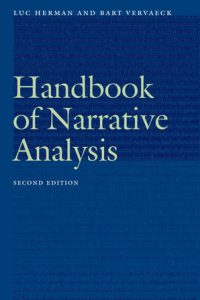 Handbook of Narrative Analysis Luc Herman and Bart Vervaeck (Series: Frontiers of Narrative)
Handbook of Narrative Analysis Luc Herman and Bart Vervaeck (Series: Frontiers of Narrative)
Stories are everywhere, from fiction across media to politics and personal identity. Handbook of Narrative Analysis sorts out both traditional and recent narrative theories, providing the necessary skills to interpret any story. In addition to discussing classical theorists, such as Gérard Genette, Mieke Bal, and Seymour Chatman, Handbook of Narrative Analysis presents precursors (such as E. M. Forster), related theorists (Franz Stanzel, Dorrit Cohn), and a large variety of postclassical critics. Among the latter particular attention is paid to rhetorical, cognitive, and cultural approaches; intermediality; storyworlds; gender theory; and natural and unnatural narratology.
Not content to consider theory as an end in itself, Luc Herman and Bart Vervaeck use two short stories and a graphic narrative by contemporary authors as touchstones to illustrate each approach to narrative. In doing so they illuminate the practical implications of theoretical preferences and the ideological leanings underlying them. Marginal glosses guide the reader through discussions of theoretical issues, and an extensive bibliography points readers to the most current publications in the field. Written in an accessible style, this handbook combines a comprehensive treatment of its subject with a user-friendly format appropriate for specialists and nonspecialists alike.
Handbook of Narrative Analysis is the go-to book for understanding and interpreting narrative. This new edition revises and extends the first edition to describe and apply the last fifteen years of cutting-edge scholarship in the field of narrative theory.
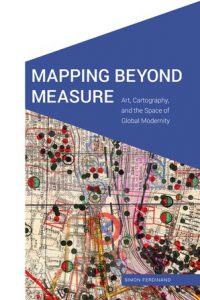 Mapping Beyond Measure : Art, Cartography, and the Space of Global Modernity Simon Ferdinand (Series: Cultural Geographies + Rewriting the Earth)
Mapping Beyond Measure : Art, Cartography, and the Space of Global Modernity Simon Ferdinand (Series: Cultural Geographies + Rewriting the Earth)
Over the last century a growing number of visual artists have been captivated by the entwinements of beauty and power, truth and artifice, and the fantasy and functionality they perceive in geographical mapmaking. This field of “map art” has moved into increasing prominence in recent years yet critical writing on the topic has been largely confined to general overviews of the field.
In Mapping Beyond Measure Simon Ferdinand analyzes diverse map-based works of painting, collage, film, walking performance, and digital drawing made in Britain, Japan, the Netherlands, Ukraine, the United States, and the former Soviet Union, arguing that together they challenge the dominant modern view of the world as a measurable and malleable geometrical space. This challenge has strong political ramifications, for it is on the basis of modernity’s geometrical worldview that states have legislated over social space; that capital has coordinated global markets and exploited distant environments; and that powerful cartographic institutions have claimed exclusive authority in mapmaking.
Mapping Beyond Measure breaks fresh ground in undertaking a series of close readings of significant map artworks in sustained dialogue with spatial theorists, including Peter Sloterdijk, Zygmunt Bauman, and Michel de Certeau. In so doing Ferdinand reveals how map art calls into question some of the central myths and narratives of rupture through which modern space has traditionally been imagined and establishes map art’s distinct value amid broader contemporary shifts toward digital mapping.
 The Mysterious Sofia : One Woman’s Mission to Save Catholicism in Twentieth-Century Mexico Stephen J.C. Andes (Series: The Mexican Experience)
The Mysterious Sofia : One Woman’s Mission to Save Catholicism in Twentieth-Century Mexico Stephen J.C. Andes (Series: The Mexican Experience)
Who was the “Mysterious Sofía,” whose letter in November 1934 was sent from Washington DC to Mexico City and intercepted by the Mexican Secret Service? In The Mysterious Sofía Stephen J. C. Andes uses the remarkable story of Sofía del Valle to tell the history of Catholicism’s global shift from north to south and the importance of women to Catholic survival and change over the course of the twentieth century. As a devout Catholic single woman, neither nun nor mother, del Valle resisted religious persecution in an era of Mexican revolutionary upheaval, became a labor activist in a time of class conflict, founded an educational movement, toured the United States as a public lecturer, and raised money for Catholic ministries—all in an age dominated by economic depression, gender prejudice, and racial discrimination. The rise of the Global South marked a new power dynamic within the Church as Latin America moved from the margins of activism to the vanguard.
Del Valle’s life and the stories of those she met along the way illustrate the shared pious practices, gender norms, and organizational networks that linked activists across national borders. Told through the eyes of a little-known laywoman from Mexico, Andes shows how women journeyed from the pews into the heart of the modern world.
 Nomad’s Land : Pastoralism and French Environmental Policy in the Nineteenth-Century Mediterranean World Andrea E. Duffy (Series: France Overseas –Studies in Empire and Decolonization)
Nomad’s Land : Pastoralism and French Environmental Policy in the Nineteenth-Century Mediterranean World Andrea E. Duffy (Series: France Overseas –Studies in Empire and Decolonization)
During the nineteenth century, the development and codification of forest science in France were closely linked to Provence’s time-honored tradition of mobile pastoralism, which formed a major part of the economy. At the beginning of the century, pastoralism also featured prominently in the economies and social traditions of North Africa and southwestern Anatolia until French forest agents implemented ideas and practices for forest management in these areas aimed largely at regulating and marginalizing Mediterranean mobile pastoral traditions. These practices changed not only landscapes but also the social order of these three Mediterranean societies and the nature of French colonial administration.
In Nomad’s Land Andrea E. Duffy investigates the relationship between Mediterranean mobile pastoralism and nineteenth-century French forestry through case studies in Provence, French colonial Algeria, and Ottoman Anatolia. By restricting the use of shared spaces, foresters helped bring the populations of Provence and Algeria under the control of the state, and French scientific forestry became a medium for state initiatives to sedentarize mobile pastoral groups in Anatolia. Locals responded through petitions, arson, violence, compromise, and adaptation. Duffy shows that French efforts to promote scientific forestry both internally and abroad were intimately tied to empire building and paralleled the solidification of Western narratives condemning the pastoral tradition, leading to sometimes tragic outcomes for both the environment and pastoralists.
 Pathologies of Love : Medicine and the Woman Question in Early Modern France Judy Kem (Series: Women and Gender in the Early Modern World)
Pathologies of Love : Medicine and the Woman Question in Early Modern France Judy Kem (Series: Women and Gender in the Early Modern World)
Pathologies of Love examines the role of medicine in the debate on women, known as the querelle des femmes, in early modern France. Questions concerning women’s physical makeup and its psychological and moral consequences played an integral role in the querelle. This debate on the status of women and their role in society began in the fifteenth century and continued through the sixteenth and, as many critics would say, well beyond. In querelle works early modern medicine, women’s sexual difference, literary reception, and gendered language often merge. Literary authors perpetuated medical ideas such as the notion of allegedly fatal lovesickness, and physicians published works that included disquisitions on the moral nature of women.
In Pathologies of Love, Judy Kem looks at the writings of Christine de Pizan, Jean Molinet, Symphorien Champier, Jean Lemaire de Belges, and Marguerite de Navarre, examining the role of received medical ideas in the querelle des femmes. She reconstructs how these authors interpreted the traditional courtly understanding of women’s pity or mercy on a dying lover, their understanding of contemporary debates about women’s supposed sexual insatiability and its biological effects on men’s lives and fertility, and how erotomania or erotic melancholy was understood as a fatal illness. While the two women who frame this study defended women and based much of what they wrote on personal experience, the three men appealed to male authority and tradition in their writings.
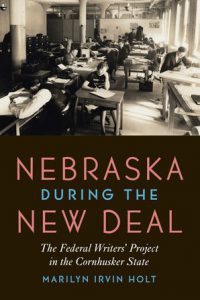 Nebraska During the New Deal : The Federal Writers’ Project in the Cornhusker State Marilyn Irvin Holt
Nebraska During the New Deal : The Federal Writers’ Project in the Cornhusker State Marilyn Irvin Holt
As a New Deal program, the Federal Writers’ Project (FWP) aimed to put unemployed writers, teachers, and librarians to work. The contributors were to collect information, write essays, conduct interviews, and edit material with the goal of producing guidebooks in each of the then forty-eight states and U.S. territories. Project administrators hoped that these guides, known as the American Guide Series, would promote a national appreciation for America’s history, culture, and diversity and preserve democracy at a time when militarism was on the rise and parts of the world were dominated by fascism.
Marilyn Irvin Holt focuses on the Nebraska project, which was one of the most prolific branches of the national program. Best remembered for its state guide and series of folklore and pioneer pamphlets, the project also produced town guides, published a volume on African Americans in Nebraska, and created an ethnic study of Italians in Omaha. In Nebraska during the New Deal Holt examines Nebraska’s contribution to the project, both in terms of its place within the national FWP as well as its operation in comparison to other state projects.
 Xurt’an : The End of the World and Other Myths, Songs, Charms, and Chants by the Northern Lacandones of Naha’ Suzanne Cook (Series: Native Literatures of the Americas and Indigenous World Literatures)
Xurt’an : The End of the World and Other Myths, Songs, Charms, and Chants by the Northern Lacandones of Naha’ Suzanne Cook (Series: Native Literatures of the Americas and Indigenous World Literatures)
Xurt’an (the end of the world) showcases the rich storytelling traditions of the northern Lacandones of Naha’ through a collection of traditional narratives, songs, and ritual speech. Formerly isolated in the dense, tropical rainforest of Chiapas, Mexico, the Lacandon Maya constitute one of the smallest language groups in the world. Although their language remains active and alive, their traditional culture was abandoned after the death of their religious and civic leader in 1996. Lacking the traditional contexts in which the culture was transmitted, the oral traditions are quickly being forgotten.
This collection includes creation myths that describe the cycle of destruction and renewal of the world, the structure of the universe, the realms of the gods and their intercessions in the affairs of their mortals, and the journey of the souls after death. Other traditional stories are non-mythic and fictive accounts involving talking animals, supernatural beings, and malevolent beings that stalk and devour hapless victims. In addition to traditional narratives, Xurt’an presents many songs that are claimed to have been received from the Lord of Maize, magical charms that invoke the forces of the natural world, invocations to the gods to heal and protect, and work songs of Lacandon women, whose contribution to Lacandon culture has been hitherto overlooked by scholars. Women’s songs offer a rare glimpse into the other half of Lacandon society and the arduous distaff work that sustained the religion. The compilation concludes with descriptions of rainbows, the Milky Way as “the white road of Our Lord,” and an account of the solstices.
Transcribed and translated by a foremost linguist of the northern Lacandon language, the literary traditions of the Lacandones are finally accessible to English readers. The result is a masterful and authoritative collection of oral literature that will both entertain and provoke, while vividly testifying to the power of Lacandon Maya aesthetic expression.
**All synopses courtesy of University of Nebraska Press (https://www.nebraskapress.unl.edu/)
What’s Up Doc? New State Agency Publications at the Nebraska Library Commission

New state agency publications have been received at the Nebraska Library Commission for the 4th quarter of 2019. Included are reports from the Nebraska Department of Administrative Services, reports from Nebraska Colleges and Universities, Nebraska Commission on Law Enforcement and Criminal Justice, Nebraska’s Coordinating Commission for Postsecondary Education, Nebraska Broadband Initiative, and new books from the University of Nebraska Press, to name a few.
Most items, except the books from the University of Nebraska Press, are available for immediate viewing and printing by clicking on the highlighted link above, or directly in the .pdf below. You can read synopses of the books received from the University of Nebraska Press in the Book Briefs blogposts.
The Nebraska Legislature created the Nebraska Publications Clearinghouse in 1972, a service of the Nebraska Library Commission. Its purpose is to collect, preserve, and provide access to all public information published by Nebraska state agencies. By law (State Statutes 51-411 to 51-413) all Nebraska state agencies are required to submit their published documents to the Clearinghouse. For more information, visit the Nebraska Publications Clearinghouse page, contact Mary Sauers, Government Information Services Librarian; or contact Bonnie Henzel, State Documents Staff Assistant.
A History of the Census in the United States : Part 14
The Fourteenth Census: Census Day was January 1, 1920.
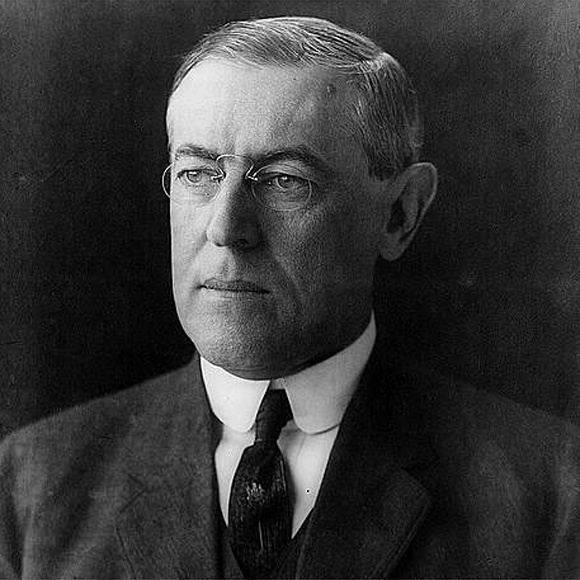
Authorizing Legislation
The date change for the 1920 census was requested by the Department of Agriculture. The department believed that in January, harvests would be completed and information about those harvests would still be fresh in farmers’ minds. Additionally, it argued that more people would be at home in January than in April.
The census act designated a three-year decennial census period, beginning July 1, 1919, during which time the Census Bureau was authorized to hire an increased work force at its Washington, DC headquarters and created a special field force to collect the data.
The act also authorized a census of manufactures to be taken in 1921, repeated every two years thereafter. Previously, the manufacturing census had been conducted every five years. The act further ordered a census of agriculture and livestock in 1925, repeated every ten years thereafter, and strengthened for penalties for those who refused to supply information or who supplied false information. These censuses, which had once been closely aligned with the decennial population count, were, by 1920, largely independent of each other.
The act also stipulated that the director could, at his discretion, furnish any governor or court with certified copies of census returns at the cost of making the search plus one dollar for certification. Individuals who wanted copies for genealogical or other purposes could also obtain them, so long as the information was not used to the detriment of the person to whom the information referred.
Enumeration
For the 1920 census, “usual place of abode” became the basis for enumeration. Individuals were enumerated as residents of the place in which they regularly slept, not where they worked or might be visiting. People with no regular residence, including “floaters” and members of transient railroad or construction camps, were enumerated as residents of the place where they were when the count was taken. Enumerators were also instructed to ask if any family members were temporarily absent; if so, these people were to be listed either with the household or on the last schedule for the census subdivision.
The format and information in the 1920 census schedules closely resembled that of the 1910 census. The 1920 census, however, did not ask about unemployment on the day of the census, nor did it ask about service in the Union or Confederate army or navy. Questions about the number of children born and how long a couple had been married were also omitted. The bureau modified the enumeration of inmates of institutions and dependent, defective, and delinquent classes. The 1920 census included four new questions: one asking the year of naturalization and three about mother tongue. There was no separate schedule for Indians in 1920.
Because of the changes in some international boundaries following World War I, enumerators were instructed to report the province (state or region) or city of persons declaring they or their parents had been born in Austria-Hungary, Germany, Russia, or Turkey. If a person had been born in any other foreign country, only the name of the country was to be entered.
The instructions to enumerators did not require that individuals spell out their names. Enumerators wrote down the information given to them; they were not authorized to request proof of age, date of arrival, or other information. The determination of race was based on the enumerator’s impressions.
Intercensal Activity
The results of the 1920 census revealed a major and continuing shift of the population of the United States from rural to urban areas. No apportionment was carried out following the 1920 census; representatives elected from rural districts worked to derail the process, fearful of losing political power to the cities. Reapportionment legislation was repeatedly delayed as rural interests tried to come up with mechanisms that would blunt the impact of the population shift. Congress finally passed a reapportionment bill in 1929. The bill declared that the House of Representatives would be apportioned based on the results of the 1930 census.
The 1929 act provided for an automatic reapportionment by the last method used unless Congress moved proactively to prevent that from occurring. The act also authorized the 1930 and subsequent decennial censuses.
Further Information
- A wide variety of historical statistics from this and other decades is available in Historical Statistics of the United States: Colonial Times to 1970. It is available as a PDF [74.4MB] or 2-part ZIP file: Part I [52.2MB] | Part II [66.1MB].
- Reports and statistics from the 1920 Census
Information provided from Census.gov
Posted in Books & Reading, Census, Education & Training, General, Information Resources, What's Up Doc / Govdocs
Tagged census
Leave a comment
A History of the Census in the United States : Part 13
The Thirteenth Census: Census Day was April 15, 1910.
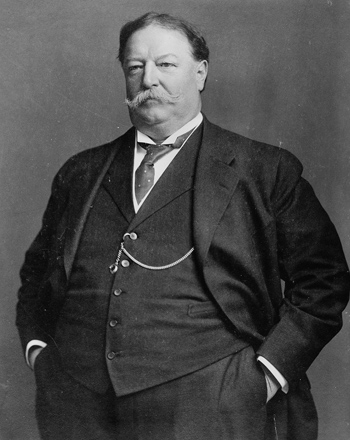
Authorizing Legislation
Legislation for the 1910 census was introduced initially in December 1907, but was not enacted into law until July 1909. The delay resulted from a disagreement over the appointment of enumerators, with President Theodore Roosevelt insisting that they be hired through the civil service system and Congress seeking to retain them as patronage positions, as had been traditional. Roosevelt won this fight.
One new feature of the 1910 act was that it changed Census Day from June 1st, which it had been since 1830, to April 15. The director of the Census Bureau suggested this adjustment, because he felt that much of the urban population would be absent from their homes on summer vacations in June.
The act also did away with vital statistics inquiries on the questionnaire, but added questions about mines and quarries. A month before the census, an amendment to the act required an additional question on nationality or mother tongue of foreign-born persons and their parents. Because the questionnaires had already been printed, enumerators were instructed to add this information to column 12 (birthplace) of the form.
The enabling legislation for the 1910 census authorized funds for the newly established permanent Census Bureau to expand its permanent workforce and specifically created several new full-time positions, including that of a geographer, a chief statistician, and an assistant director. The assistant director, appointed by the president with the advice and consent of the Senate, was to be an experienced practical statistician. All non-presidentially-appointed census employees were hired on the basis of their scores in open, competitive examinations, administered throughout the country by the Civil Service Commission.
Enumeration
For the first time, enumerators in the large cities distributed questionnaires in advance, a day or two prior to April 15, so that people could become familiar with the questions and have time to prepare their answers. In practice, only a small portion of the population filled out their questionnaires before the enumerator visit, however. The law gave census takers two weeks to complete their work in cities of 5,000 inhabitants or more while enumerators in smaller and rural areas were allotted 30 days to complete their task.
Crises and Controversies
Difficulties with the tabulation process continued despite the presence of automatic counting machinery introduced in the most recent censuses. Correcting these problems delayed publication of some population numbers. Some census results, such as the total population of cities, were issued first as brief press releases, but were expanded into bulletins and abstracts that appeared as long as a year before the final reports were published.
Intercensal Activity
When the United States entered World War I in 1917, the Census Bureau took on an important new role. During the nation’s mobilization for the war, the Census Bureau was able to use its compiled population and economic data to report on populations of draft-age men, along with the different states’ industrial capacities.
Further Information
- A wide variety of historical statistics from this and other decades is available in Historical Statistics of the United States: Colonial Times to 1970. It is available as a PDF [74.4MB] or 2-part ZIP file: Part I [52.2MB] | Part II [66.1MB].
- Reports and statistics from the 1910 Census
Information provided from Census.gov
Posted in Books & Reading, Census, Education & Training, General, Information Resources, What's Up Doc / Govdocs
Tagged census
Leave a comment
A History of the Census in the United States : Part 12
The Twelfth Census: Census Day was June 1, 1900.
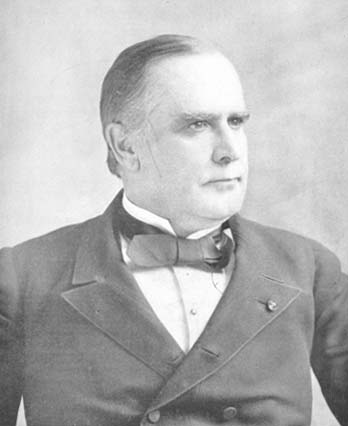
Authorizing Legislation
In the act authorizing the 1900 census, Congress limited census content to questions dealing with population, mortality, agriculture, and manufacturing. Reports on these topics, called “Census Reports,” were to be published by June 30, 1902. The act also authorized special census agents to collect statistics relating to incidents of deafness, blindness, insanity, juvenile delinquency, and the like; as well as on religious bodies; utilities; mining; and transportation, among others. These statistics were to be collected following the completion of the regular census. The preparation of the special reports developed from these statistics was to be accomplished in such a way so as to not interfere with the completion of the Census Reports.
The act also changed the title of the chief officer of the Census Office from “supervising clerk of the census” to “director of the census.” Additionally, a new position, assistant director of the census, to be filled by “an experienced practical statistician,” was established. The director was given the power to appoint staff based on noncompetitive examinations. However, in practice, positions were given to political referrals.
Enumeration
The Departments of War and the Navy enumerated military personnel (including those who were abroad). Indian Territory was enumerated with the cooperation of the commissioner of Indian affairs.
Hawaii, which had been annexed in 1898, was included in the census for the first time. (A census of Puerto Rico and Cuba had been carried out by the War Department in 1899. Under the direction of the Philippine Commission, a census of that territory was taken in 1903.)
Intercensal Activity
In 1902, the formerly temporary Census Office was made a permanent organization within the Department of the Interior. In 1903, it became the Census Bureau and was moved to the new Department of Commerce and Labor.
The transition from a temporary to a permanent agency was sometimes controversial. One of Congress’s goals in creating the new department was to centralize many of the overlapping statistical offices scattered throughout the bureaucracy; Census Bureau officials attempted, without much early success, to assume the role as chief statistical agency of the federal government. These aspirations were hindered, in part, by the Census Bureau’s subordinate position within the Department of Commerce and Labor.
Further Information
- A wide variety of historical statistics from this and other decades is available in Historical Statistics of the United States: Colonial Times to 1970. It is available as a PDF [74.4MB] or 2-part ZIP file: Part I [52.2MB] | Part II [66.1MB].
- Reports and statistics from the 1880 Census
- History and Growth of the United States Census: 1790-1890 [PDF 117MB], by Carroll D. Wright and William C. Hunt.
Information provided from Census.gov
Posted in Books & Reading, Census, Education & Training, General, Information Resources, What's Up Doc / Govdocs
Tagged census
Leave a comment
A History of the Census in the United States : Part 11
The Eleventh Census: Census Day was June 2, 1890.
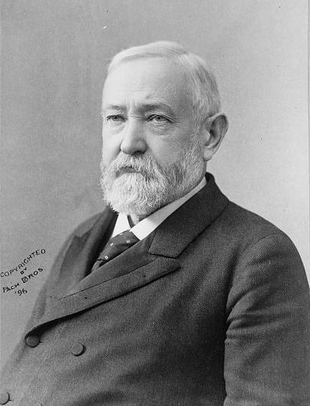
Authorizing Legislation
An act signed into law March 1, 1889 authorized the census of 1890, which was modeled after the 1880 enumeration.
Enumeration
Because June 1 was a Sunday, the 1890 enumeration began on June 2. The census employed 175 supervisors, with one or more appointed to each state or territory, except Alaska and the Indian Territory. Subdivisions assigned to a single enumerator were not to exceed 4,000 inhabitants. In cities designated by 1880 census results to have populations under 10,000, the enumeration was to be completed within two weeks. Enumerators were required to collect all information required by the act by a personal visit to each dwelling and family.
The 1890 questionnaire retained almost all of the inquiries from the 1880 census, and a few new questions were added. The 1890 census included a greater number of subjects than any previous census and more than would be included in those immediately following. New entries included questions about ownership and indebtedness of farms and homes; the names, as well as units served in, length of service and residences of surviving Union soldiers and sailors and the names of the widows of those who had died. Another new question dealt with race, including “Japanese” as a category for the first time, along with “Chinese,” “Negro,” “mulatto,” “quadroon,” “octoroon,” and “white.”
The population schedule was changed so that a separate sheet was used for each family, irrespective of the number of persons included.
As in 1880, experts and special agents were hired to make special enumerations of manufactures, Indians living within the jurisdiction of the United States, and a separate enumeration of Alaska. Furthermore, the schedule collecting social statistics was withdrawn from enumerators; the work of obtaining statistics concerning mines and mining, fisheries, churches, education, insurance, transportation, and wealth, debt, and taxation, also was conducted by experts and special agents.
For the first time, enumerators were given detailed maps to follow so they could account for every street or road and not stray beyond their assigned boundaries.
Technological Advancement
The 1890 census was notable as the first in which the electric tabulating system, invented by former Census Office employee Herman Hollerith, was used. Tabulation of the 1880 census results took almost a decade to complete, and officials hoped Hollerith’s machine would alleviate delays caused by relying on hand counts and rudimentary tallying machines to process data.
Hollerith’s machine required information from the census questionnaires to be transferred to a card, which was hole-punched at various places to indicate the characteristics – age, sex, color, marital status, etc. – of a person enumerated. The cards were then run through an electronic tabulating machine, which, using metal pins to complete circuits through the punched holes, counted or cross-tabulated different characteristics.
Intercensal Activity
Robert P. Porter served as superintendent of census until his resignation on July 31, 1893. On October 3, 1893, Congress enacted a law that directed census-related work to continue under the direction of the commissioner of labor. On March 2, 1895, a further act of Congress closed the Census Office and transferred the unfinished work to the office of the secretary of the interior, where it continued until July 1, 1897.
Further Information
- A wide variety of historical statistics from this and other decades is available in Historical Statistics of the United States: Colonial Times to 1970. It is available as a PDF [74.4MB] or 2-part ZIP file: Part I [52.2MB] | Part II [66.1MB].
- Reports and statistics from the 1880 Census
- History and Growth of the United States Census: 1790-1890 [PDF 117MB], by Carroll D. Wright and William C. Hunt.
Information provided from Census.gov
Posted in Books & Reading, Census, Education & Training, General, Information Resources, What's Up Doc / Govdocs
Tagged census
Leave a comment
Friday Reads: Nebraska During the New Deal–The Federal Writers’ Project in the Cornhusker State by Marilyn Irvin Holt
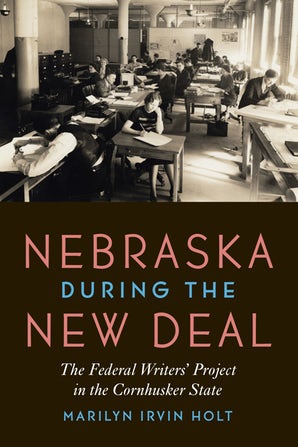
I don’t generally read a lot of non-fiction, but occasionally I come across a title that really catches my Nebraska history eye: Nebraska During the New Deal : the Federal Writers Project in the Cornhusker State. And for those not already familiar with the writing of Marilyn Irvin Holt (The Orphan Trains, Children Of the Western Plains, and others), her meticulous research and insightful writing never disappoints. I highly recommend her newest title as another excellent example of the history of Nebraska and the Nebraska spirit.
As a New Deal program, the Federal Writers’ Project (FWP) aimed to put unemployed writers, teachers, and librarians to work. The contributors were to collect information, write essays, conduct interviews, and edit material with the goal of producing guidebooks in each of the then forty-eight states and U.S. territories. Project administrators hoped that these guides, known as the American Guide Series, would promote a national appreciation for America’s history, culture, and diversity and preserve democracy at a time when militarism was on the rise and parts of the world were dominated by fascism.
Marilyn Irvin Holt focuses on the Nebraska project, which was one of the most prolific branches of the national program. Best remembered for its state guide and series of folklore and pioneer pamphlets, the project also produced town guides, published a volume on African Americans in Nebraska, and created an ethnic study of Italians in Omaha. In Nebraska during the New Deal Holt examines Nebraska’s contribution to the project, both in terms of its place within the national FWP as well as its operation in comparison to other state projects. (University of Nebraska Press)
A History of the Census in the United States : Part 10
The Tenth Census: Census Day was June 1, 1880.
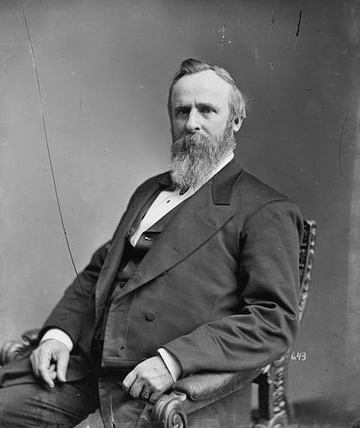
Authorizing Legislation
The act authorizing the 1880 census gave supervision of the enumeration to a body of officers, known as supervisors of the census, who were specifically chosen for work on the census. The superintendent of the census and all supervisors were to be presidential appointees, subject to Senate confirmation. The terms of both were to expire when the census results were compiled and published.
Enumeration
Each supervisor was responsible for recommending the organization of his district for enumeration, choosing enumerators for the district and supervising their work, reviewing and transmitting the returns from the enumerators to the central census office, and overseeing the compensation for enumerators in each district.
The census act required each enumerator “to visit personally each dwelling house in his sub-division, and each family therein, and each individual living out of a family in any place of abode, and by inquiry made of the head of such family, or of the member there of deemed most credible and worthy of trust, or of such individual living out of a family, to obtain each and every item of information and all the particulars.” In case no one was available at a family’s usual place of abode, the enumerator was directed by the law “to obtain the required information, as nearly as may be practicable, from the family or families, or person or persons, living nearest to such place of abode.”
The census act also provided for the collection of detailed data on the condition and operation of railroad corporations, incorporated express companies, and telegraph companies, and of life, fire, and marine insurance companies (using Schedule No.4 – Social Statistics). Fines were to be imposed on officials of “every corporation…who shall…willfully neglect or refuse to give true and complete answers to any inquiries authorized by this act.”
In addition, the superintendent of census was required to collect and publish statistics of the population, industries, and resources of Alaska, with as much detail as was practical. An enumeration was also made of all untaxed Indians within the jurisdiction of the United States.
The 1880 decennial census was taken on five schedules: “Population,” “Mortality,” “Agriculture,” “Social Statistics,” and “Manufacturing.”
Further Information
- A wide variety of historical statistics from this and other decades is available in Historical Statistics of the United States: Colonial Times to 1970. It is available as a PDF [74.4MB] or 2-part ZIP file: Part I [52.2MB] | Part II [66.1MB].
- Reports and statistics from the 1880 Census
- History and Growth of the United States Census: 1790-1890 [PDF 117MB], by Carroll D. Wright and William C. Hunt.
Information provided from Census.gov
Posted in Books & Reading, Census, Education & Training, General, Information Resources, What's Up Doc / Govdocs
Tagged census
Leave a comment
A History of the Census in the United States : Part 9
The Ninth Census: Census Day was June 1, 1870.
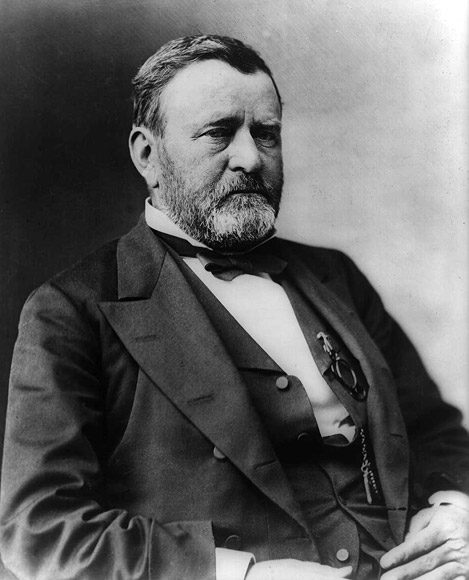
Authorizing Legislation
The 1870 Census was conducted under the authority of the Census Act of 1850. A new law, approved on May 6, 1870, called for two procedural changes: The marshals were to submit the returns from the population questionnaire to the Census Office by September 10, 1870; all other questionnaires were due by October 1, 1870. Additionally, penalties for refusing to reply to enumerator inquiries were expanded to cover all questions asked on all questionnaires.
Enumeration
The Census Office, and the position of superintending clerk were abolished in May 1865. A portion of the clerks engaged in census work transferred to the General Land Office, where work of the 1860 census was completed under the direction of the commissioner of the General Land Office
After the Civil War, the decennial census questionnaires were reordered and redesigned to account for end of the “slave questionnaire.” The schedules for the 1870 census were: “General Population,” “Mortality,” “Agriculture,” “Products of Industry,” and “Social Statistics.”
The secretary of interior selected General Francis A. Walker as superintendent of the ninth census on February 7, 1870. At the time of his appointment General Walker was chief of the Bureau of Statistics – an agency within the Treasury Department – and was one of several experts who had participated in the U.S. House of Representatives’ committee deliberations on the 1870 census. A capable administrator, Walker introduced examinations to test the qualifications of those applying for positions with the Census Office. Walker remained as superintendent until November 1871, when Congress’s failure to appropriate funds for his salary caused him to resign. Nevertheless, he continued overseeing census work as commissioner of Indian Affairs. Later, he resumed his duties as superintendent of the census, working without compensation.
The 1870 enumeration was completed by August 23, 1871.
Technological Advancement
By 1870, the job of tallying and tabulating questionnaire responses was becoming overly burdensome for the Census Office. This problem was partially alleviated with the use of a rudimentary tallying machine, invented by the chief clerk of the Census Office, and later superintendent, Charles W. Seaton.
Further Information
- A wide variety of historical statistics from this and other decades is available in Historical Statistics of the United States: Colonial Times to 1970. It is available as a PDF [74.4MB] or 2-part ZIP file: Part I [52.2MB] | Part II [66.1MB].
- Reports and statistics from the 1850 census.
- History and Growth of the United States Census: 1790-1890 [PDF 117MB], by Carroll D. Wright and William C. Hunt.
Information provided from Census.gov
Posted in Books & Reading, Census, Education & Training, General, Information Resources, What's Up Doc / Govdocs
Tagged census
Leave a comment
A History of the Census in the United States : Part 8
The Eighth Census: Census Day was June 1, 1860.
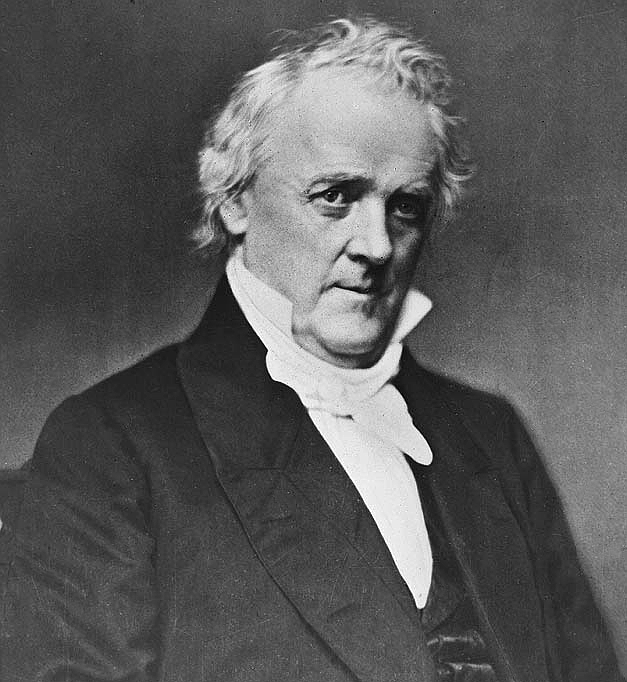
Authorizing Legislation
The 1850 Census Act was the authorizing legislation for the 1860 census. That act had stipulated that, according to the recommendation of the secretary of the interior, its provisions were to be adhered to for all future decennial censuses if no new authorizing legislation was passed by January 1 of the year in which the census was required.
Intercensal Activity
The Census Office, and the position of superintending clerk were abolished in May 1865. A portion of the clerks engaged in census work transferred to the General Land Office, where work of the 1860 census was completed under the direction of the commissioner of the General Land Office
Further Information
- A wide variety of historical statistics from this and other decades is available in Historical Statistics of the United States: Colonial Times to 1970. It is available as a PDF [74.4MB] or 2-part ZIP file: Part I [52.2MB] | Part II [66.1MB].
- Reports and statistics from the 1850 census.
- History and Growth of the United States Census: 1790-1890 [PDF 117MB], by Carroll D. Wright and William C. Hunt.
Information provided from Census.gov
Posted in Books & Reading, Census, Education & Training, General, Information Resources, What's Up Doc / Govdocs
Tagged census
Leave a comment
A History of the Census in the United States : Part 7
The Seventh Census: Census Day was June 1, 1850.

Authorizing Legislation
The Census Act of 1840 (signed into law on March 3, 1839 and amended by an act of February 26, 1840) authorized establishing a centralized census office during each enumeration. Congress left the design of the questionnaire to the discretion of the secretary of state, but specified that inquiries be made of each household. Subjects among the inquiries were to include “the pursuits, industry, education, and resources of the country.” New population inquiries included questions about school attendance, literacy, and vocation. In March 1849, Congress enacted a bill establishing a census board whose membership consisted of the secretary of state, the attorney general, and the postmaster general. The law authorized this board to prepare and cause to be printed such forms and schedules as may be necessary for the full enumeration of the inhabitants of the United States; it also authorized the board to prepare forms and schedules for collecting information on mines, agriculture, commerce, manufactures, education, and other topics, as well as “exhibit a full view of the pursuits, industry, education, and resources of the country.”
The seventh census was governed by the provisions of an act of May 23, 1850 that directed that six schedules be used to collect the information requested by the Congress. The act directed enumerators to return their results to the secretary of the interior by November 1, 1850.
Enumeration
The number of population inquiries grew in the 1850 census. Every free person’s name was to be listed, not just the head of the household. The marshals also collected additional “social statistics,” including information on taxes, schools, crime, wages, value of the estate, etc. and data on mortality.
Each marshal was also responsible for subdividing his district into “known civil divisions,” such as counties, townships, or wards, and ensuring that his assistants’ returns were completed properly.
Further Information
- A wide variety of historical statistics from this and other decades is available in Historical Statistics of the United States: Colonial Times to 1970. It is available as a PDF [74.4MB] or 2-part ZIP file: Part I [52.2MB] | Part II [66.1MB].
- Reports and statistics from the 1850 census.
- History and Growth of the United States Census: 1790-1890 [PDF 117MB], by Carroll D. Wright and William C. Hunt.
Information provided from Census.gov
Posted in Books & Reading, Census, Education & Training, General, Information Resources, What's Up Doc / Govdocs
Tagged census
Leave a comment
A History of the Census in the United States : Part 6
The Sixth Census: Census Day was June 1, 1840.
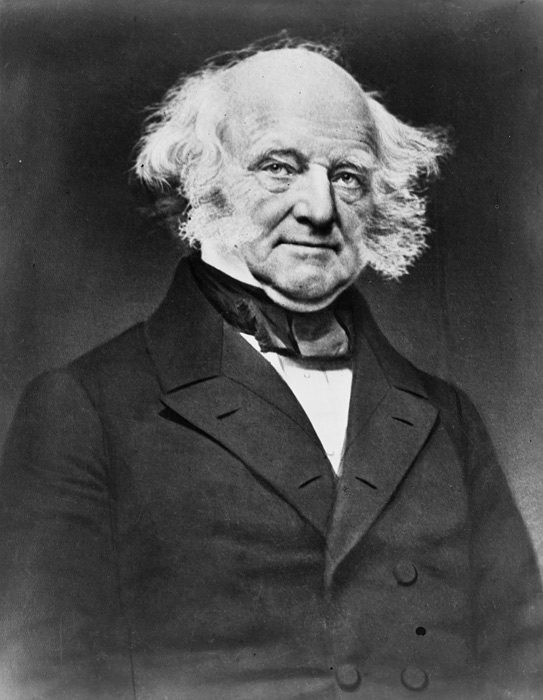
Authorizing Legislation
The Census Act of 1840 (signed into law on March 3, 1839 and amended by an act of February 26, 1840) authorized establishing a centralized census office during each enumeration. Congress left the design of the questionnaire to the discretion of the secretary of state, but specified that inquiries be made of each household. Subjects among the inquiries were to include “the pursuits, industry, education, and resources of the country.” New population inquiries included questions about school attendance, literacy, and vocation.
Enumeration
The administration of the sixth census was very similar to that of the fifth. Enumeration began on June 1, 1840. Marshals were to receive two copies of the census receipts from enumerators by November 1, 1840, one of which was to be sent to the secretary of state by December 1, 1840.
Further Information
- A wide variety of historical statistics from this and other decades is available in Historical Statistics of the United States: Colonial Times to 1970. It is available as a PDF [74.4MB] or 2-part ZIP file: Part I [52.2MB] | Part II [66.1MB].
- Reports and statistics from the 1840 census.
- History and Growth of the United States Census: 1790-1890 [PDF 117MB], by Carroll D. Wright and William C. Hunt.
Information provided from Census.gov
Posted in Books & Reading, Census, Education & Training, General, Information Resources, What's Up Doc / Govdocs
Tagged census
Leave a comment
A History of the Census in the United States: Part 5
The Fifth Census: Census Day was June 1, 1830.
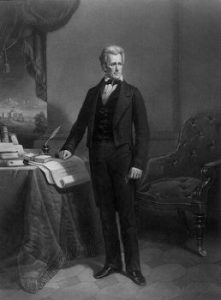
on Census Day, June 1, 1830.
Authorizing Legislation
President John Q. Adams, in his fourth address to the U.S. Congress on December 28, 1828, recommended starting the census earlier in the year than August 1. He also proposed that the collection of age data be extended from infancy, in intervals of 10 years, “to the utmost boundaries of life.” These changes were incorporated into the census act of March 23, 1830.
Enumeration
As in the previous census, marshals or their assistants visited every dwelling house for enumeration, or, as the law stated, made a personal inquiry of the head of every family in their district. Because of delays in the compilation of the census returns, the filing date was extended to August 1, 1831.
In 1830, enumerators used uniform printed schedules for the first time. In prior censuses, marshals had used whatever paper was available and had designed and bound the sheets themselves. Because federal census clerks did not have to sort through a huge variety of schedules in 1830, they were able to tabulate census results more efficiently.
The 1830 census counted the population only. After the failures of the past two censuses, no attempt was made to collect additional data on manufacturing and industry in the United States.
Further Information
- A wide variety of historical statistics from this and other decades is available in Historical Statistics of the United States: Colonial Times to 1970. It is available as a PDF [74.4MB] or 2-part ZIP file: Part I [52.2MB] | Part II [66.1MB].
- Reports and statistics from the 1830 census.
- History and Growth of the United States Census: 1790-1890 [PDF 117MB], by Carroll D. Wright and William C. Hunt.
Information provided from Census.gov
Resources for Libraries and the 2020 Census

Apply by Nov. 22 for Library Census Equity Fund
The American Library Association (ALA) is accepting applications for Library Census Equity Fund mini-grants until Nov. 22. ALA will provide 25 libraries with $2,000 mini-grants to bolster their service to hard-to-count communities and help achieve a complete count in the 2020 Census.
Census hiring: Nov. 6 webinar and new tip sheet
The U.S. Census Bureau is currently hiring 500,000 temporary workers for the 2020 Census through an online application process. To achieve a complete count in the 2020 Census, the Census Bureau needs to recruit qualified and diverse applicants in every part of the country. To learn how libraries can promote awareness of 2020 Census job opportunities, register for ALA’s free webinar on Nov. 6 and read ALA’s new tip sheet, “How Can My Library Increase Awareness of 2020 Census Hiring?” (PDF).
Preparing your library for the Census: Nov. 14 webinar and new tip sheet
With the 2020 Census just a few months away, how can libraries prepare, and what funding sources may be available to support libraries’ preparations and activities? Learn more at ALA’s free webinar on Nov. 14 and read ALA’s new tip sheet, “Preparing My Library for the 2020 Census” (PDF).
Trustees invited to become Library Census Champions
Library Census Champions is a new network of state, local and tribal library Trustees helping their libraries and communities prepare for the 2020 Census. Elected and appointed library Trustees can sign up to become a Library Census Champion and receive free information, resources, and actions to take to ensure a fair and accurate census. To learn more about this program, Register to watch the recording on-demand.
Census resources from ALACheck ala.org/census for updates through the 2020 Census as ALA continues to add new resources. For instance, find Libraries Transform images, template presentation slides (PPTX) and presenter notes (PDF)
Upcoming events
- November 6, 2019: Webinar: “Connecting Your Community to 2020 Census Jobs”
- November 14, 2019: Webinar: “Preparing Your Library for the 2020 Census”
- January 25, 2019: ALA Midwinter Meeting: “2020 Census: How Libraries Can Support a Complete Count”
- February 28, 2019: PLA Conference: “2020 Census Countdown: What You Need to Know Now”
A History of the Census in the United States: Part 4
The Fourth Census: Census Day was August 7, 1820.
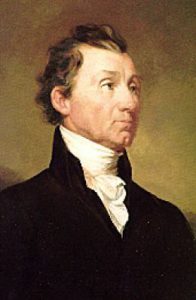
on Census Day, August 7, 1820.
Authorizing Legislation
The fourth census was taken in accordance with the census act of March 14, 1820, which required more detailed population-related inquiries than earlier enumerations. This census is notable for being the first to inquire if respondents were engaged in agriculture, commerce, or manufacturing.
Enumeration
The enumeration began on the first Monday of August. Its scheduled six-month completion time frame was extended by about seven months to September 1, 1821. As in previous decades, the 1820 census act again required assistant marshals to visit every dwelling house, or head of every family within their designated districts.
Data relating to manufacturing were collected by assistants in each district, sent to the marshals, and then transmitted to the secretary of state along with the population returns. The report on manufacturing presented the data for these establishments by counties, but the results were not summarized for each district and the aggregate statement that was released was based on incomplete returns. The 1820 manufacturing census suffers the same criticism as that in 1810: Poor enumerator training resulted in dramatic variations in data quality and accuracy.
Further Information
- A wide variety of historical statistics from this and other decades is available in Historical Statistics of the United States: Colonial Times to 1970. It is available as a PDF [74.4MB] or 2-part ZIP file: Part I [52.2MB] | Part II [66.1MB].
- Reports and statistics from the 1820 census
- History and Growth of the United States Census: 1790-1890 [PDF 117MB], by Carroll D. Wright and William C. Hunt.
November is Native American Heritage Month
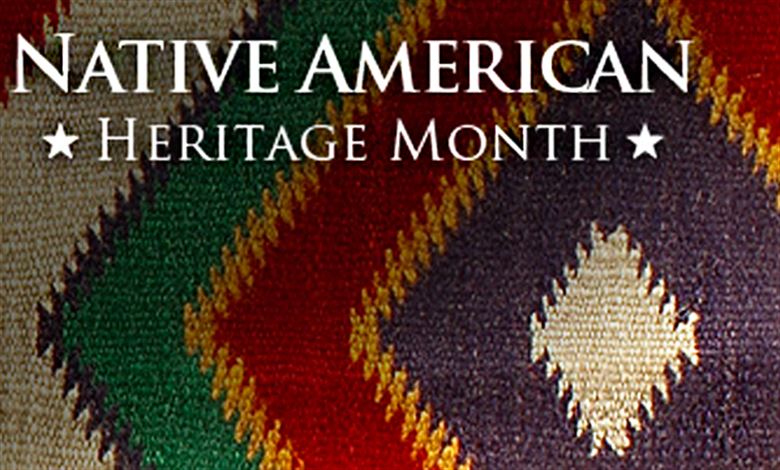
November is National American Indian Heritage Month. The Library of Congress, National Archives and Records Administration, National Endowment for the Humanities, National Gallery of Art, National Park Service, Smithsonian Institution and United States Holocaust Memorial Museum join in paying tribute to the rich ancestry and traditions of Native Americans.
Visit the National American Indian Heritage Month website to view a Calendar of Events, Exhibits and Collections, Audio and Video, Resources for Teachers, Images, and much more!
Book Briefs: New University of Nebraska Press Books at the Nebraska Publications Clearinghouse
 The Nebraska Publications Clearinghouse receives documents every month from all Nebraska state agencies, including the University of Nebraska Press (UNP). Each month we will be showcasing the UNP books that the Clearinghouse receives. UNP books, as well as all Nebraska state documents, are available for checkout by libraries and librarians, for their patrons, in Nebraska.
The Nebraska Publications Clearinghouse receives documents every month from all Nebraska state agencies, including the University of Nebraska Press (UNP). Each month we will be showcasing the UNP books that the Clearinghouse receives. UNP books, as well as all Nebraska state documents, are available for checkout by libraries and librarians, for their patrons, in Nebraska.
Here are the UNP books the Clearinghouse received in October:
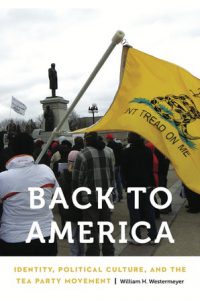 Back to America : Identity, Political Culture, and the Tea Party Movement William H. Westermeyer (Series: Anthropology of Contemporary North America)
Back to America : Identity, Political Culture, and the Tea Party Movement William H. Westermeyer (Series: Anthropology of Contemporary North America)
Back to America is an ethnography of local activist groups within the Tea Party, one of the most important recent political movements to emerge in the United States and one that continues to influence American politics. Though often viewed as the brainchild of conservative billionaires and Fox News, the success of the Tea Party movement was as much, if not more, the result of everyday activists at the grassroots level. William H. Westermeyer traces how local Tea Party groups (LTPGs) create submerged spaces where participants fashion action-oriented collective and personal political identities forged in the context of cultural or figured worlds. These figured worlds allow people to establish meaningful links between their own lives and concerns, on the one hand, and the movement’s goals and narratives, on the other. Collectively, the production and circulation of the figured worlds within LTPGs provide the basis for subjectivities that often nurture political activism.
Westermeyer reveals that LTPGs are vibrant and independent local organizations that, while constantly drawing on nationally disseminated cultural images and discourses, are far from simple agents of the larger organizations and the media. Back to America offers a welcome anthropological approach to this important social movement and to our understanding of grassroots political activism writ large.
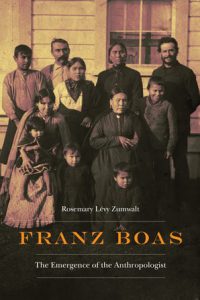 Franz Boas : The Emergence of the Anthropologist Rosemary Levy Zumwalt (Series: Critical Studies in the History of Anthropology)
Franz Boas : The Emergence of the Anthropologist Rosemary Levy Zumwalt (Series: Critical Studies in the History of Anthropology)
Rosemary Lévy Zumwalt tells the remarkable story of Franz Boas, one of the leading scholars and public intellectuals of the late nineteenth and early twentieth centuries. The first book in a two-part biography, Franz Boas begins with the anthropologist’s birth in Minden, Germany, in 1858 and ends with his resignation from the American Museum of Natural History in 1906, while also examining his role in training professional anthropologists from his berth at Columbia University in New York City.
Zumwalt follows the stepping-stones that led Boas to his vision of anthropology as a four-field discipline, a journey demonstrating especially his tenacity to succeed, the passions that animated his life, and the toll that the professional struggle took on him. Zumwalt guides the reader through Boas’s childhood and university education, describes his joy at finding the great love of his life, Marie Krackowizer, traces his 1883 trip to Baffin Land, and recounts his efforts to find employment in the United States. A central interest in the book is Boas’s widely influential publications on cultural relativism and issues of race, particularly his book The Mind of Primitive Man (1911), which reshaped anthropology, the social sciences, and public debates about the problem of racism in American society.
Franz Boas presents the remarkable life story of an American intellectual giant as told in his own words through his unpublished letters, diaries, and field notes. Zumwalt weaves together the strands of the personal and the professional to reveal Boas’s love for his family and for the discipline of anthropology as he shaped it.
 Skin Memory John Sibley Williams (Series: Backwaters Prize in Poetry)
Skin Memory John Sibley Williams (Series: Backwaters Prize in Poetry)
A stark, visceral collection of free verse and prose poetry, Skin Memory scours a wild landscape haunted by personal tragedy and the cruel consequences of human acts in search of tenderness and regeneration. In this book of daring and introspection, John Sibley Williams considers the capriciousness of youth, the terrifying loss of cultural identity and self-identity, and what it means to live in an imperfect world. He reveals each body as made up of all bodies, histories, and shared dreams of the future.
In these poems absence can be held, the body’s dust is just dust, and though childhood is but a poorly edited memory and even our well-intentioned gestures tend toward ruin, Williams nonetheless says, “I’m pretty sure, everything within us says something beautiful.”
 Terrorizing Gender : Transgender Visibility and the Surveillance Practices of the U.S. Security States Mia Fischer (Series: Expanding Frontiers: Interdisciplinary Approaches to Studies of Women, Gender, and Sexuality)
Terrorizing Gender : Transgender Visibility and the Surveillance Practices of the U.S. Security States Mia Fischer (Series: Expanding Frontiers: Interdisciplinary Approaches to Studies of Women, Gender, and Sexuality)
The increased visibility of transgender people in mainstream media, exemplified by Time magazine’s declaration that 2014 marked a “transgender tipping point,” was widely believed to signal a civil rights breakthrough for trans communities in the United States. In Terrorizing Gender Mia Fischer challenges this narrative of progress, bringing together transgender, queer, critical race, legal, surveillance, and media studies to analyze the cases of Chelsea Manning, CeCe McDonald, and Monica Jones. Tracing how media and state actors collude in the violent disciplining of these trans women, Fischer exposes the traps of visibility by illustrating that dominant representations of trans people as deceptive, deviant, and threatening are integral to justifying, normalizing, and reinforcing the state-sanctioned violence enacted against them.
The heightened visibility of transgender people, Fischer argues, has actually occasioned a conservative backlash characterized by the increased surveillance of trans people by the security state, evident in debates over bathroom access laws, the trans military ban, and the rescission of federal protections for transgender students and workers. Terrorizing Gender concludes that the current moment of trans visibility constitutes a contingent cultural and national belonging, given the gendered and racialized violence that the state continues to enact against trans communities, particularly those of color.
**All synopses courtesy of University of Nebraska Press (https://www.nebraskapress.unl.edu/)
2020 Census: The Law Is Clear–Personal Information Cannot Be Shared
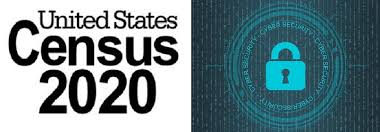
The mission of the Census Bureau is to serve as the nation’s leading provider of quality statistics about its people and economy. They couldn’t produce this information without you. Responsible data stewardship is how they maintain your trust. Being responsible stewards of your data is not only required by law but also embedded in their culture.
The Law Protects Your Information. Under Title 13 of the U.S. Code, your information must be kept confidential, and your answers cannot be used against you by any government agency or court. Anyone who violates this law faces severe penalties.
They Use Cutting-Edge Safeguards To Protect Your Identity. They do not identify individuals in the statistics they publish. Their policies and safeguards help them ensure the confidentiality of your information. Our Disclosure Review Board verifies that any product they release meets their confidentiality standards. Click on the link to learn more about the U.S Census Bureau’s Data Protection and Privacy Program: Find Out More.
Resources for Veterans, their Families, Caregivers, and Survivors

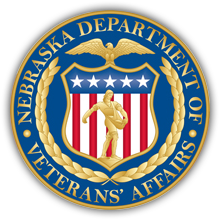
The U.S. Department of Veterans Affairs and the Nebraska Department of Veterans Affairs websites offer many resources for Veterans, their families, caregivers, and survivors.
For example, the U.S. VA website offers information on GI Bill benefits, Healthcare, Disability, Education, Veterans Day information and discounts, a website to help find old service friends, informational podcasts and webinars, and much, much more. You can even sign up for email updates to receive the latest news about VA benefits.
The Nebraska Department of Veterans Affairs website offers similar information, but more specifically for Nebraska Veterans. Job Fairs in Nebraska, general veterans employment, who to contact for veterans financial aid, tuition aid, and a guide to disability claims & appeals, just to name a few.
November Health Outreach Resources

November is …
- National Family Health History Month
- National American Indian Heritage Month
- American Diabetes Month
The National Network of Libraries of Medicine has just released resources to help you plan health programs and promote health information during November. Links include a program kit, webinars, electronic bulletin slides, posters, and social media materials. Visit this page for more details: https://nnlm.gov/all-of-us/national-health-observances#toc-9.
Healthfinder.gov offers a toolkit for American Diabetes Month. The toolkit provides ideas for hosting a community event, and resources to share health information through your website, newsletter, or social media. Visit this page for more details: https://healthfinder.gov/NHO/NovemberToolkit.aspx.
Christian Minter, MSLIS
Community Engagement and Health Literacy Librarian
Coordinator of Circulation Services
Assistant Professor
McGoogan Library of Medicine
University of Nebraska Medical Center
986705 Nebraska Medical Center | Omaha, NE 68198-6705
402-559-7226
christian.minter@unmc.edu

